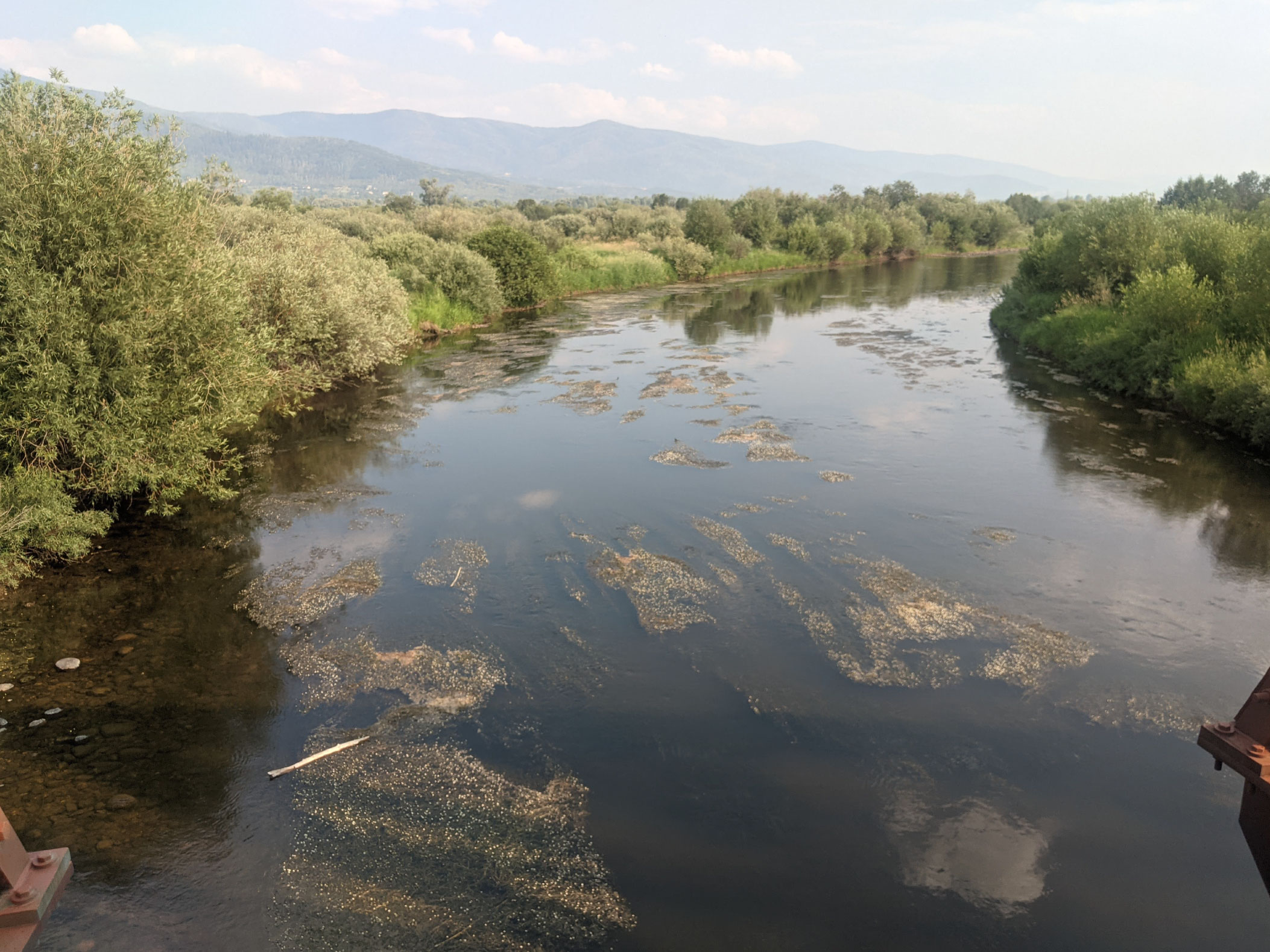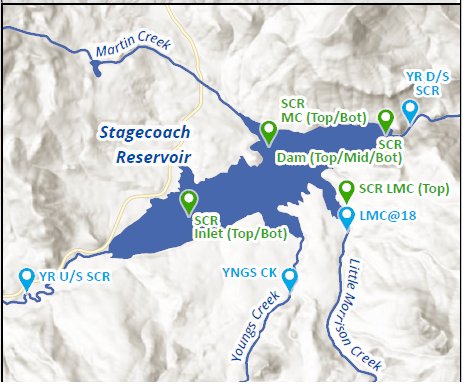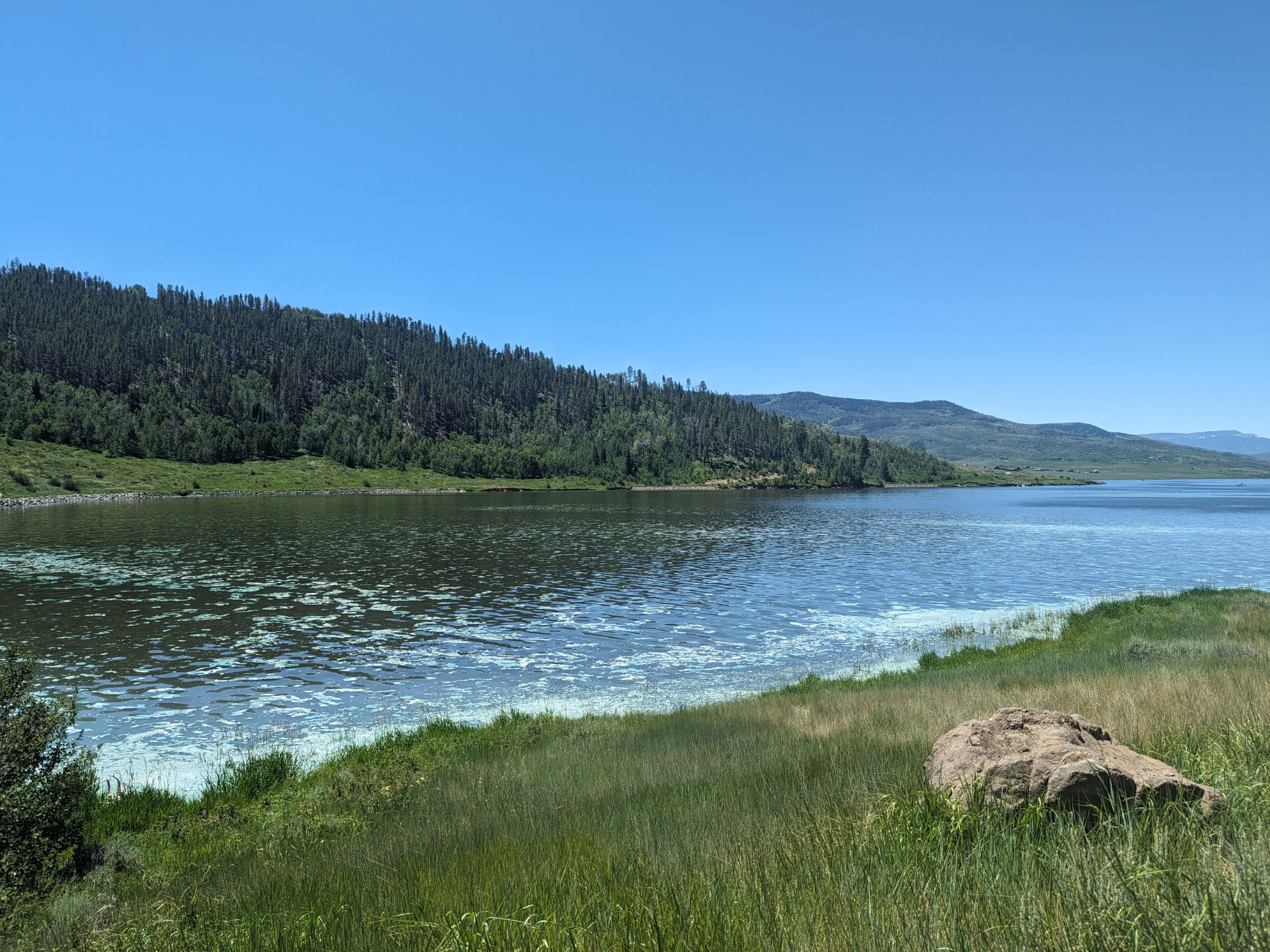What to know about
Blue-Green Algae
Blue-green algae or cyanobacteria, which can live in nearly any aquatic habitat, typically blooms in summer months. Blooms can occur in Stagecoach Reservoir at anytime from June through September. A bloom occurs when cyanobacteria multiplies rapidly and forms a dense concentration in the water. While exact causes can be different for each bloom, cyanobacteria can multiply quickly when favorable conditions such as high temperatures and nutrient levels exist.
Cyanobacteria becomes harmful when it begins to produce toxins. The toxins produced in a bloom could reach levels that are harmful for humans or pets swimming in or consuming the water.
It is important to check your surroundings and be aware of blue-green algae in water bodies.

If you see algae blooms:
- Swim at your own risk. Unknown hazards may exist.
- Avoid areas of scum whether swimming, wading or boating.
- Do not drink or allow pets to drink the water.
- Clean and rinse fish well and discard guts in a trash receptacle.
- Call your doctor or veterinarian if you or your animals have sudden or unexplained sickness or signs of poisoning.
Water Quality Monitoring at Stagecoach Reservoir

Water quality monitoring occurs in and around Stagecoach Reservoir from May to November. Both the Upper Yampa Water Conservancy District (UYWCD) and Colorado Parks and Wildlife (CPW) test water samples from five different locations within the reservoir during summer months. CPW also conducts weekly field tests when the swim beach and marina are open.
In addition to testing within the reservoir, UYWCD conducts monthly testing in the Yampa River below Stagecoach Reservoir Dam. The map above shows the monthly testing locations for UYWCD’s water quality monitoring at Stagecoach. As noted in the map, samples are taken from different depths within the reservoir at three of the testing locations.
UYWCD’s monthly water samples are subject to an algae identification test, including enumeration and biovolume. The samples are also tested for chemical and physical properties, which include a variety of nutrients such as nitrogen and phosphorous, chlorophyll-a. When an algae bloom is present, the samples are tested for toxins.

Additional Water Quality Monitoring
A Routt County Water Quality Monitoring Program, supported by Routt County, City of Steamboat Springs, Mount Werner Water, Morrison Creek Water and Sanitation District, and the Upper Yampa Water Conservancy District, samples water quality at six other locations throughout the basin. The sampling includes physical and chemical properties, major ions, nutrients, algae, and a number of other important water quality metrics.
Other organizations are spearheading new water quality monitoring projects that will contribute to a growing database of information for water bodies and waterways in the Yampa River Basin.
Where Can You Find Water Quality Data?
While many organizations are working to gather water quality data in the Yampa River Basin now, historic water quality data can be inconsistent and difficult to find.
Over the last two years, UYWCD has been working with partners to develop a Yampa River Dashboard that will serve as a data hub for water quality, water management, agriculture, and recreation in the Yampa River Basin. The dashboard is now available for public use and can be accessed at youryampariver.org or by clicking the “Yampa River Dashboard” button to the left. Additional resources regarding water quality have been listed here as well.

